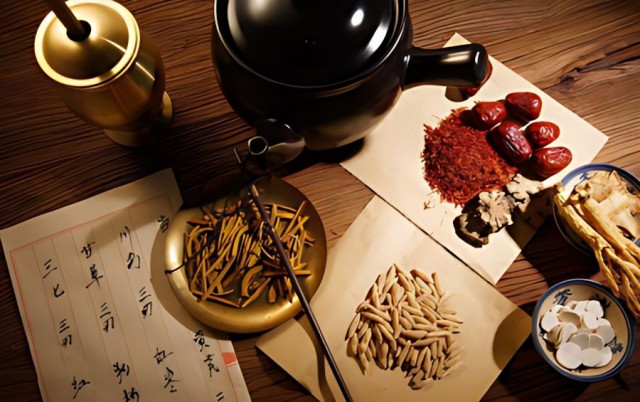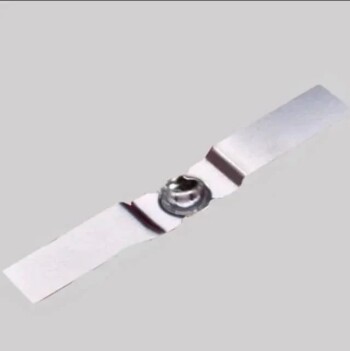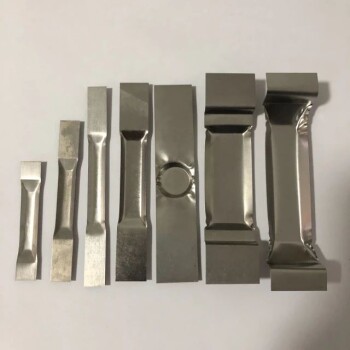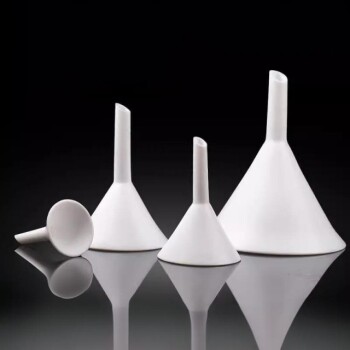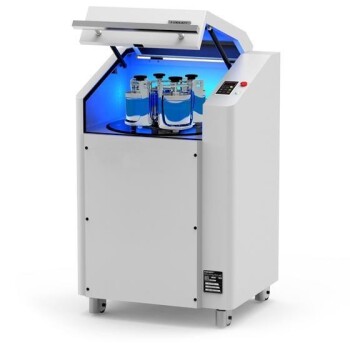로터리 증발기 소개
정의 및 기능
회전식 증발기는 추출 용매의 일부가 증발하고 제거되도록 하여 한약 추출물의 농도를 높이는 데 중요한 역할을 합니다. 이 과정은 추출물 내의 용질 농도를 크게 증가시켜 효능과 효능을 향상시킵니다. 회전식 증발기의 작동에는 진공 조건에서 용액을 끓는점까지 가열하여 용매를 효율적으로 기화시키는 과정이 포함됩니다. 그런 다음 용매 증기는 응축되어 수집되고, 남은 농축 추출물은 추가 처리 또는 사용을 위해 유지됩니다.
이 농축 방법은 고온에서 분해될 수 있는 섬세한 화합물을 처리할 수 있기 때문에 한약 추출물에 특히 유리합니다. 회전식 증발기가 제공하는 제어된 환경은 농축 과정 내내 추출물의 활성 성분이 안정적이고 온전하게 유지되도록 보장합니다. 또한 증발기의 회전 운동은 증발 플라스크 표면에 용액의 얇은 막을 생성하여 증발 속도를 높이고 전반적인 효율을 향상시킵니다.
회전식 증발기의 기능은 단순한 농도 조절을 넘어 한약 제제의 정제 및 표준화에도 중요한 역할을 합니다. 이 장치는 용질의 농도를 일관되게 높임으로써 최종 의약품의 균일성과 품질 관리에 기여합니다. 이는 한약의 각 배치가 규정된 표준을 충족하고 일관된 치료 효과를 제공하는 데 필수적입니다.
요약하면 회전식 증발기는 한약 분야에서 필수적인 도구로, 유효 성분의 무결성을 보존하면서 추출물을 농축할 수 있는 안정적이고 효율적인 수단을 제공합니다. 제어된 조건에서 작동하는 능력과 효율적인 열 전달 메커니즘 덕분에 한약 정제의 고유한 요구 사항에 특히 적합합니다.
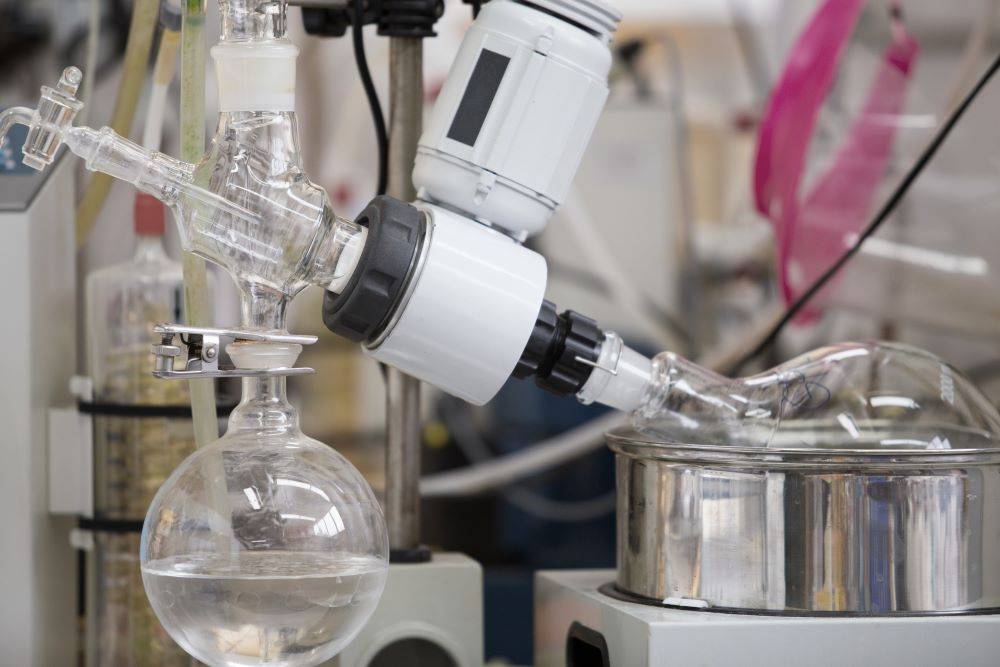
증발의 특성
증발 공정은 한약 추출물의 농축에 대한 응용을 이해하는 데 중요한 몇 가지 특징을 나타냅니다. 주요 특징 중 하나는 비휘발성 용질의 존재로 인해 용액의 끓는점이 상승한다는 것입니다. 끓는점 상승으로 알려진 이 현상은 용질이 용매의 기화 능력을 방해하여 동일한 증발 속도를 달성하기 위해 더 높은 온도가 필요하기 때문에 발생합니다.
또 다른 중요한 측면은 재료 및 프로세스별 영향입니다. 용매와 용질에 따라 증발 장비와 고유하게 상호 작용하여 효율성과 에너지 소비에 차이가 발생합니다. 예를 들어 용매의 종류(예: 물, 알코올)와 용질의 특성(예: 이온성, 비이온성)은 열전달 계수와 증발 공정의 전체 에너지 요구량에 큰 영향을 미칠 수 있습니다.
에너지 소비는 증발 공정에서 중요한 고려 사항입니다. 용액을 가열하고 필요한 진공 조건을 유지하는 데 필요한 에너지는 상당할 수 있습니다. 이 에너지 수요는 용액의 초기 농도, 원하는 최종 농도, 열 전달 메커니즘의 효율 등의 요인에 의해 영향을 받습니다. 따라서 회전식 증발기의 비용 효율적이고 지속 가능한 운영을 위해서는 에너지 사용을 최적화하는 것이 필수적입니다.
요약하면, 끓는점 상승, 재료별 영향, 상당한 에너지 소비 등 증발의 고유한 특성은 회전식 증발기를 사용한 한약 추출물의 정제에서 중추적인 역할을 합니다. 이러한 측면을 이해하는 것은 장비를 효율적이고 효과적으로 운영하기 위해 필수적입니다.
증발 장비
증발기의 분류
증발 장비의 핵심인 증발기는 작동과 효율성에 영향을 미치는 몇 가지 중요한 매개 변수에 따라 분류됩니다. 이러한 분류는 주로 다음을 중심으로 이루어집니다. 압력 조건 , 2차 증기의 활용 및 운영 유형 .
압력 조건
- 대기 증발기: 표준 대기압에서 작동하므로 압력 제어가 중요하지 않은 범용 애플리케이션에 적합합니다.
- 가압식 증발기: 고압에서 작동하여 끓는점이 높아 특정 응용 분야에서 더 효율적으로 열을 전달할 수 있습니다.
- 감압(진공) 증발기: 감압 상태에서 작동하여 용액의 끓는점을 낮추므로 한약 추출물과 같이 열에 민감한 물질에 이상적입니다.
2차 증기 활용
- 단일 효과 증발기: 끓는 용액에서 직접 생성된 증기를 더 이상 사용하지 않고 응축하여 사용합니다.
- 다중 효과 증발기: 여러 개의 증발기를 직렬로 연결하여 한 효과의 증기를 사용하여 다음 효과를 가열하는 원리를 사용하여 에너지 효율을 크게 향상시킵니다.
작동 유형
- 순환식 증발기: 주기적으로 용액을 농축한 후 제거하는 순환 방식으로 작동하며 배치 공정에 적합합니다.
- 단일 패스 증발기: 용액이 증발기를 한 번만 통과하여 원하는 농도에 도달하는 연속 작동으로 연속 생산 라인에 이상적입니다.
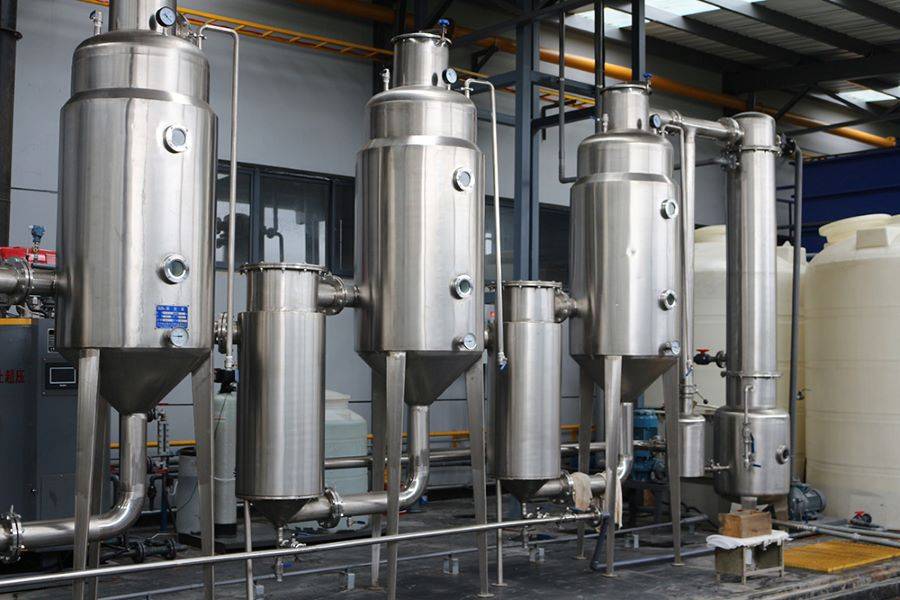
각 분류에는 고유한 장점이 있으며 처리되는 물질의 특정 요구 사항, 운영 규모, 원하는 효율성 및 안전 고려 사항에 따라 선택됩니다.
선택 기준
한약 추출물의 정제를 위한 증발 장비를 선택할 때는 최적의 성능과 효율성을 보장하기 위해 몇 가지 중요한 요소를 고려해야 합니다. 주요 기준으로는 장비의 구조적 무결성, 증발 영역의 크기, 운영 효율성, 다양한 유형의 약액에 대한 적응성, 에너지 소비량 등이 있습니다.
구조적 무결성
증발 장비의 구조는 증발 공정의 엄격한 조건을 견딜 수 있도록 견고하고 잘 설계되어야 합니다. 견고한 프레임워크는 장기적인 신뢰성을 보장하고 기계적 고장 가능성을 줄여줍니다.
증발 면적
증발 면적이 넓을수록 더 많은 양의 액체를 더 효율적으로 처리할 수 있습니다. 이는 용질의 농도가 핵심 목표인 전통 한약 정제에서 특히 중요합니다.
운영 효율성
높은 증발 효율은 처리 시간과 에너지 소비를 최소화하는 데 매우 중요합니다. 약용 화합물의 무결성을 손상시키지 않으면서 빠른 증발을 달성할 수 있는 장비가 매우 바람직합니다.
적응성
장비는 각각 고유한 특성을 가진 다양한 약액을 처리할 수 있을 만큼 다목적이어야 합니다. 이러한 적응성은 정제 공정의 여러 단계에서 동일한 장비를 사용할 수 있도록 보장하여 여러 특수 장비의 필요성을 줄여줍니다.
에너지 효율성
에너지 소비는 특히 대규모 작업에서 중요한 고려 사항입니다. 에너지 효율이 높은 장비는 운영 비용을 절감할 뿐만 아니라 정제 공정이 환경에 미치는 영향도 최소화합니다.
이러한 기준을 신중하게 평가하여 한약 추출물의 농축 및 정제에 가장 적합한 증발 장비를 선택하면 효과와 효율성을 모두 보장할 수 있습니다.
로터리 증발기 세부 정보
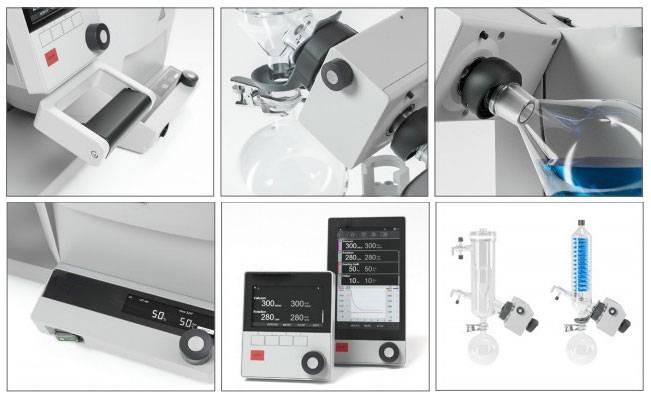
구조적 구성 요소
회전식 증발기는 용매를 효율적으로 제거하고 용액을 농축하기 위해 설계된 정교한 장비입니다. 핵심 구성 요소는 다음과 같습니다:
- 호스트 유닛: 회전식 증발기의 본체로, 회전을 구동하고 진공을 유지하는 모터와 제어 시스템을 수용하는 역할을 합니다.
- 유리 제품: 공정의 순도와 화학적 무결성을 유지하는 데 필수적인 증발 플라스크 및 콘덴서와 같은 유리 부품은 시스템에 필수적인 요소입니다.
- 항온 수조: 이 구성 요소는 균일한 가열을 보장하여 공정 전반에 걸쳐 일정한 온도를 유지함으로써 제어되고 효율적인 증발을 가능하게 합니다.
- 커넥터 및 밸브: 다양한 커넥터와 밸브는 액체와 가스의 흐름을 정밀하게 제어하고 진공의 무결성을 보장하는 등 시스템 기능에 매우 중요합니다.
이러한 각 구성 요소는 회전식 증발기의 효율적인 작동에 중요한 역할을 하며 한약 추출물의 농축 및 정제 효과에 기여합니다.
작동 원리
진공 조건에서 회전식 증발기는 수조를 가열하고 증발 플라스크를 회전시켜 작동합니다. 이 회전은 플라스크의 내벽에 얇고 균일한 막을 형성하여 증발 가능한 표면적을 크게 향상시킵니다. 진공 환경은 용매의 끓는점을 낮추어 더 낮은 온도에서 효율적으로 증발할 수 있도록 합니다.
기화된 용매는 콘덴서를 통해 이동하여 다시 액체 상태로 냉각됩니다. 이렇게 응축된 용매는 회수되어 다른 용도로 재활용할 수 있습니다. 전체 공정은 에너지 소비와 용매 손실을 최소화하면서 증발 속도를 최대화하도록 설계되었습니다.
이 프로세스의 효율성을 더 자세히 설명하려면 다음 사항을 고려하세요:
- 표면적 증가: 플라스크의 회전을 통해 넓은 표면적이 가열조에 지속적으로 노출되어 증발 속도가 빨라집니다.
- 끓는점 감소: 진공은 시스템 내부의 압력을 감소시켜 용매의 끓는점을 낮추고 대기 중 끓는점보다 훨씬 낮은 온도에서 증발할 수 있도록 합니다.
- 에너지 효율: 회전식 증발기는 낮은 온도와 진공 상태에서 작동하기 때문에 기존 증발 방식에 비해 에너지 소비를 최소화합니다.
이러한 요소의 조합으로 회전식 증발기는 한약 추출물의 농축 및 정제에 이상적인 도구가 되어 높은 효율과 용매 낭비를 최소화합니다.
작동 요구 사항
회전식 증발기의 효율적이고 안전한 작동을 보장하려면 몇 가지 세부 단계를 꼼꼼하게 따라야 합니다. 이 과정은 철저한 사용 전 검사 . 여기에는 모든 유리 구성품의 무결성을 확인하고, 진공 시스템이 올바르게 작동하는지 확인하며, 가열조가 적절한 액체로 채워져 있는지 확인하는 것이 포함됩니다. 마모나 손상의 징후가 있으면 작동 장애를 방지하기 위해 즉시 해결해야 합니다.
다음으로 증발 플라스크의 로딩 및 가열 가 중요합니다. 농축할 용액이 담긴 플라스크가 회전식 증발기에 단단히 장착됩니다. 그런 다음 시스템이 활성화되고 플라스크가 제어된 속도로 회전하여 내벽에 얇은 필름을 생성합니다. 이 필름은 증발을 위한 표면적을 향상시켜 공정의 효율을 높입니다. 동시에 가열조는 필요한 온도로 조정되어 용액이 열 손상 없이 균일하게 가열되도록 보장합니다.
수조 높이 조정 수조 높이 는 또 다른 필수 단계입니다. 열 전달을 최적화하려면 증발 플라스크에 대한 가열 수조의 높이를 정확하게 설정해야 합니다. 수조가 너무 높으면 과열되어 용액이 손상될 수 있습니다. 반대로 너무 낮으면 열 전달 효율이 저하되어 증발 속도가 느려집니다. 최적의 조건을 유지하려면 이 파라미터를 지속적으로 모니터링하고 미세 조정해야 합니다.
마지막으로 연속 공급 용액의 지속적인 공급을 구현하여 일정한 농도 프로세스를 유지할 수 있습니다. 이 기술은 용매가 증발할 때 증발 플라스크에 새로운 용액을 추가하여 농축 공정이 중단되지 않도록 하는 것입니다. 연속 공급을 위해서는 시스템에 과부하가 걸리지 않도록 하고 원하는 농도 수준을 유지하기 위해 세심한 제어가 필요합니다.
이러한 세부 단계를 따르면 작업자는 회전식 증발기가 한약 추출물의 농축 및 정제 과정에서 효율적이고 안전하며 효과적으로 작동하도록 보장할 수 있습니다.
세척 절차
회전식 증발기는 매번 사용 후 효율성과 수명을 유지하기 위해 세심한 세척 과정을 거쳐야 합니다. 초기 단계에서는 정제수로 장치를 철저히 헹구어 잔류 용매나 추출제를 제거합니다. 이렇게 하면 후속 작업에 영향을 미치거나 향후 추출의 순도를 떨어뜨릴 수 있는 오염 물질이 남지 않습니다.
헹굼 후에는 회전식 증발기의 모든 포트와 연결부를 깨끗한 비닐 봉투로 조심스럽게 밀봉해야 합니다. 이 예방 조치는 장비에 먼지 및 기타 미립자가 침전되어 오염이나 운영 비효율로 이어질 수 있는 것을 방지합니다. 또한 비닐봉투에 깨끗한 식별 태그를 부착하는 것이 좋습니다. 이 태그는 마지막 청소 날짜를 기록하고, 특정 기기를 식별하며, 다음 사용자에게 유용할 수 있는 기타 관련 정보를 제공하는 등 다양한 용도로 사용할 수 있습니다.
이러한 세척 절차를 준수하면 회전식 증발기를 최적의 상태로 유지하여 다음 한약 추출 시 농축 및 정제를 위한 준비를 마칠 수 있습니다.
안전 및 유지보수
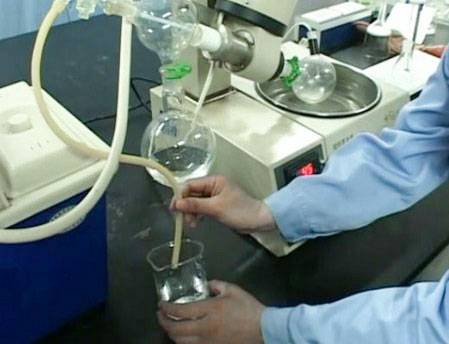
안전 예방 조치
회전식 증발기를 작동할 때는 장비의 무결성과 사용자의 안전을 모두 보장하기 위해 적절한 안전 프로토콜을 준수하는 것이 가장 중요합니다. 주요 안전 조치에는 장치를 시작하고 중지할 때 올바른 순서를 엄격하게 따르는 것이 포함됩니다. 이 순서는 갑작스러운 압력 변화와 잠재적인 장비 손상을 방지하기 때문에 매우 중요합니다.
또한 작동하기 전에 온도조절 수조에 물이 충분히 채워져 있는지 확인하는 것이 필수적입니다. 이 단계는 용매의 효율적인 증발에 필수적인 일관된 온도 제어를 유지하는 데 매우 중요합니다. 수조가 적절히 채워지면 과열을 방지하고 증발 공정이 안정적이고 안전한 매개변수 내에서 유지됩니다.
커넥터의 기밀성을 유지하는 것도 또 다른 중요한 안전 조치입니다. 시스템에서 누출이 발생하면 압력 변동이 발생하여 효과적인 증착에 필요한 진공 조건이 손상될 수 있습니다. 커넥터를 정기적으로 점검하고 유지보수하면 이러한 문제를 방지하여 안정적이고 안전한 작동 환경을 보장할 수 있습니다.
요약하자면, 올바른 시작 및 중지 순서를 준수하고, 온도 조절 수조에 물이 채워져 있는지 확인하고, 커넥터의 기밀성을 유지하는 등 이러한 안전 예방 조치를 따르는 것이 회전식 증발기의 안전하고 효율적인 작동을 위한 기본입니다.
일반적인 고장 및 해결 방법
회전식 증발기를 작동할 때 증발 공정의 효율성과 효과를 저해할 수 있는 몇 가지 일반적인 문제가 발생할 수 있습니다. 이러한 문제에는 회전하지 않는 병, 낮은 진공 수준 및 가열 문제가 포함됩니다. 이러한 각 문제에는 회전식 증발기가 최적의 상태로 계속 작동하도록 하기 위한 구체적인 진단 단계와 해결책이 있습니다.
-
회전하지 않는 병: 이 문제는 일반적으로 모터 오작동이나 회전 메커니즘의 장애물로 인해 발생합니다. 이 문제를 해결하려면 먼저 모터가 올바르게 작동하는지 점검하세요. 모터가 작동하는 경우, 병의 회전을 방해할 수 있는 회전 메커니즘에 이물질이나 막힘이 없는지 확인하세요. 경우에 따라 모터를 교체하거나 장애물을 제거해야 할 수도 있습니다.
-
저진공: 진공이 낮으면 증발 과정의 효율성이 크게 떨어질 수 있습니다. 이 문제는 진공 시스템의 누출이나 진공 펌프의 문제로 인해 발생하는 경우가 많습니다. 모든 조인트와 연결부에 누출 징후가 있는지 검사하는 것부터 시작하세요. 누출이 발견되면 해당 씰을 조이거나 교체합니다. 누출이 발견되지 않으면 진공 펌프의 서비스 또는 교체가 필요할 수 있습니다.
-
난방 문제: 비효율적이거나 일관되지 않은 난방은 증발 과정을 느리게 할 수 있습니다. 이 문제는 온도 조절기 오작동, 온도 조절 수조의 수위 문제, 발열체 손상 등 여러 가지 요인으로 인해 발생할 수 있습니다. 이 문제를 해결하려면 온도 조절 수조가 올바른 수준으로 채워져 있고 제대로 작동하는지 확인하세요. 발열체에 손상이 있는지 확인하고 필요한 경우 교체하세요. 온도 조절기를 정기적으로 유지보수하고 보정하면 난방 문제를 예방할 수 있습니다.
이러한 일반적인 고장을 체계적으로 해결함으로써 사용자는 회전식 증발기의 성능과 수명을 유지하여 한약 추출물의 농축 및 정제에 있어 효율적이고 안정적인 작동을 보장할 수 있습니다.
증발 및 농축 요구 사항
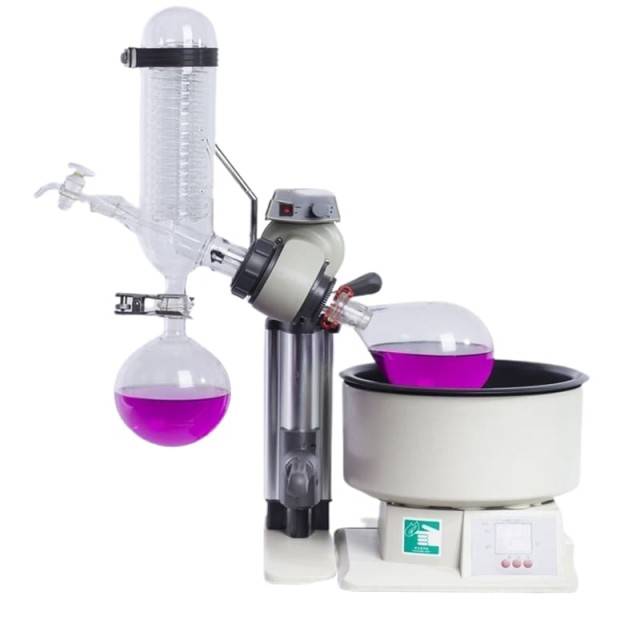
열 전달 온도 차이
진공 감압을 통해 열전달 온도 차이를 늘리는 것은 한약 추출물의 증발 효율을 높이는 데 중요한 전략입니다. 이 방법은 열역학 원리를 활용하여 용매의 끓는점이 현저히 낮아지는 환경을 조성하여 증발 과정을 가속화합니다. 진공 감압은 용액을 둘러싼 주변 압력을 효과적으로 감소시켜 더 낮은 온도에서 더 빠르고 효율적으로 증발할 수 있도록 합니다.
이 방식은 에너지를 절약할 뿐만 아니라 한방 추출물에서 흔히 발견되는 섬세한 의약 성분의 열 분해를 최소화합니다. 작동 온도를 낮게 유지하면 화학적 변화나 유효 성분 손실의 위험이 크게 줄어듭니다. 증발 효율이 향상되면 처리 시간이 단축되고 농축 추출물의 수율이 높아져 효과적인 약용 제제 생산에 매우 중요합니다.
진공 감압이 열 전달에 미치는 영향을 설명하기 위해 다음 표를 고려하십시오:
| 조건 | 압력(kPa) | 끓는점(°C) | 증발 속도 |
|---|---|---|---|
| 대기 | 101.3 | 100 | 보통 |
| 진공 감압 | 50 | 38 | 높음 |
| 진공 감압 | 20 | 20 | 매우 높음 |
표에서 볼 수 있듯이 압력이 감소하면 끓는점이 크게 낮아져 용매가 증발하는 속도가 증가합니다. 이러한 증발률의 증가는 열전달 온도 차이의 개선에 정비례하므로 진공 감압은 한약 추출물의 정제에 없어서는 안 될 기술입니다.
총 열전달 계수
총 열전달 계수를 높이는 것은 한약 추출물의 정제에서 증발 및 농축 공정의 효율성을 최적화하는 데 매우 중요합니다. 열원에서 용액으로 열이 전달되는 속도를 정량화하는 이 계수는 시스템 내의 열 저항에 직접적인 영향을 받습니다.
단열재 층, 오염 또는 열 교환 표면 불량으로 인해 발생하는 열 저항은 효율적인 열 전달을 방해하는 장벽으로 작용합니다. 열교환 표면 청소, 단열 개선, 열전달 장비 설계 최적화 등 이러한 문제를 체계적으로 해결하면 전반적인 열 저항을 크게 줄일 수 있습니다. 이러한 감소는 총 열전달 계수 증가로 이어져 증발 속도를 가속화하고 추출물의 농축 효율을 향상시킵니다.
열 저항에 영향을 미치는 다음 요소와 그에 따른 해결책을 고려해 보세요:
| 열 저항 계수 | 솔루션 |
|---|---|
| 열교환기의 오염 | 침전물 제거를 위한 정기적인 청소 및 유지보수 |
| 단열재 불량 | 단열재를 업그레이드하여 열 손실을 줄입니다. |
| 최적이 아닌 장비 설계 | 더 나은 표면적 활용을 위해 열교환기를 재설계합니다. |
이러한 전략을 구현함으로써 회전식 증발기는 보다 효율적인 열 전달을 달성하여 증발 및 농축 공정을 개선할 수 있습니다. 이러한 최적화는 활성 화합물의 무결성을 유지하는 것이 가장 중요한 전통 한약 정제의 맥락에서 특히 중요합니다.
결론
로터리 증발기의 장점
회전식 증발기는 한약 제제의 정제 및 농축에 특히 적합한 몇 가지 뚜렷한 이점을 제공합니다. 주요 이점 중 하나는 한약의 섬세한 화학 성분을 보존하는 데 중요한 저온에서 작동할 수 있다는 점입니다. 이러한 저온 작동은 용매의 끓는점을 낮추는 진공 시스템의 통합을 통해 이루어지며, 약용 화합물을 높은 열에 노출시키지 않고도 효율적으로 증발시킬 수 있습니다.
또한 회전식 증발기는 용매를 제대로 관리하지 않으면 용매가 비싸고 환경에 유해한 경우가 많은 제약 산업에서 매우 중요한 용매 회수에 탁월한 성능을 발휘합니다. 이러한 장치의 연속 공급 시스템은 용매 회수를 극대화하여 폐기물 및 운영 비용을 절감합니다.
또 다른 중요한 장점은 회전식 증발기가 제공하는 균일한 열 전달입니다. 고르지 않은 가열로 인해 민감한 화합물의 품질이 저하될 수 있는 기존 증류 장비와 달리 회전식 증발기는 증발 표면 전체에 열을 고르게 분산시킵니다. 이는 회전 중에 발생하는 구심력으로 인해 증발 병의 내부 표면에 액체 시료의 얇고 균일한 막을 생성하여 촉진됩니다. 이 넓은 가열 면적은 높은 증발 효율을 보장하여 프로세스를 더 빠르고 효과적으로 만듭니다.
요약하면, 저온 작동, 효율적인 용매 회수 및 균일한 열 전달의 조합으로 회전식 증발기는 한약 제제의 정제 및 농축에 없어서는 안 될 도구입니다.
관련 제품
- 실험실용 알루미나 도가니 세라믹 증착 보트
- 반구형 바닥 텅스텐 몰리브덴 증착 보트
- 효율적인 샘플 혼합 및 균질화를 위한 실험실 디스크 회전 믹서
- 실험실 및 산업용 오일 프리 다이어프램 진공 펌프
- 박막 증착용 알루미늄 코팅 세라믹 증착 도가니
